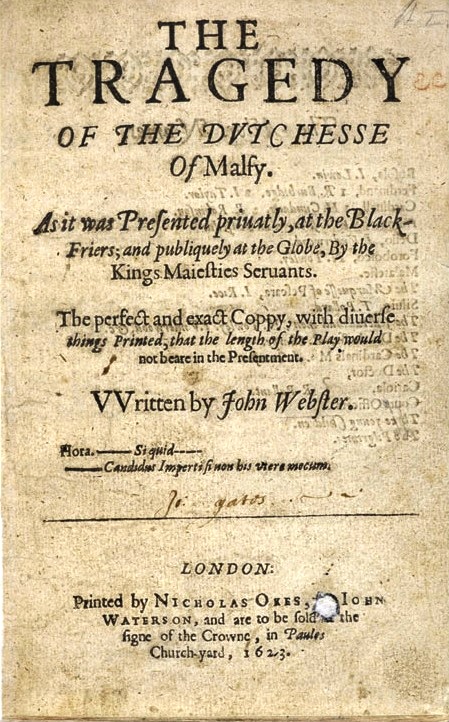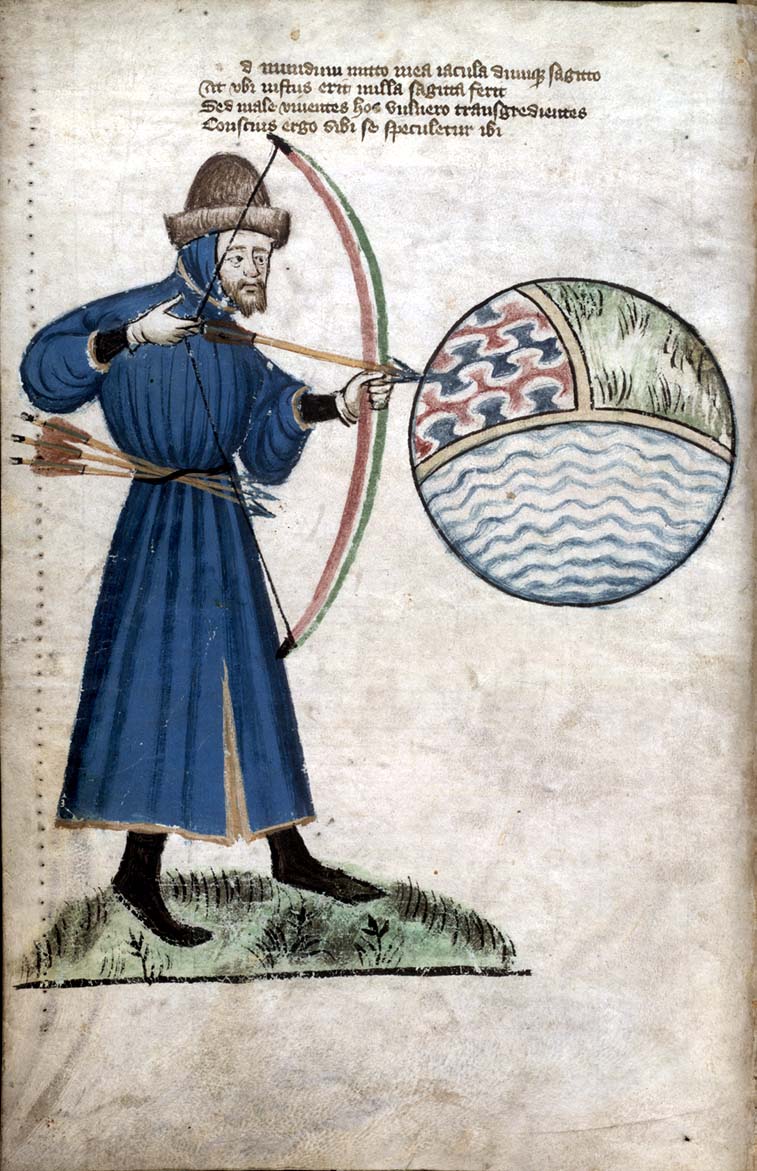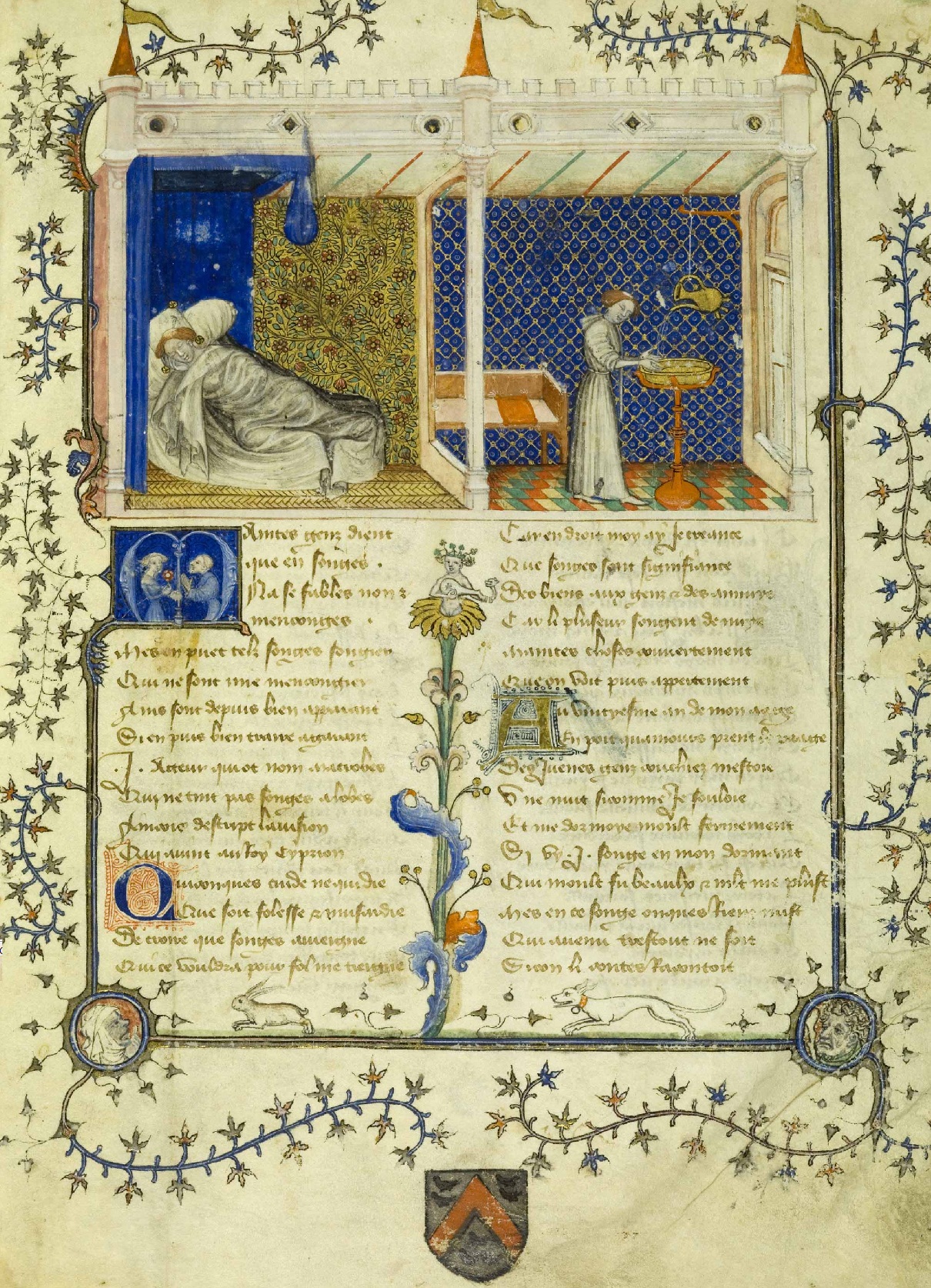|
Appius And Virginia
''Appius and Virginia'' is an early 17th-century stage play, a tragedy by John Webster (and perhaps Thomas Heywood). It is the third and least famous of his tragedies, after '' The White Devil'' and ''The Duchess of Malfi''. Heywood On the basis of his distinctive Latinate vocabulary, Heywood has been suggested as a part-author of the play, though some commentators disagree. (Heywood has also been proposed as a part-author of Webster and Rowley's ''A Cure for a Cuckold''.) Date No definite evidence on the play's date of origin or early performance history has survived. Scholars have conjectured dates of authorship any time in the interval between 1608 and 1634. Critics who consider the play crude have favored an early date, and thought of the work as Webster's first venture into the genre of tragedy. Others have focused on the 1625–27 period as perhaps the most likely. It has been argued that Webster was influenced by Shakespeare's classical Roman tragedies, and that he likel ... [...More Info...] [...Related Items...] OR: [Wikipedia] [Google] [Baidu] |
John Webster
John Webster (c. 1580 – c. 1632) was an English Jacobean dramatist best known for his tragedies '' The White Devil'' and ''The Duchess of Malfi'', which are often seen as masterpieces of the early 17th-century English stage. His life and career overlapped with Shakespeare's. Biography Webster's life is obscure and the dates of his birth and death are not known. His father, a carriage maker also named John Webster, married a blacksmith's daughter named Elizabeth Coates on 4 November 1577 and it is likely that Webster was born not long after, in or near London. The family lived in St Sepulchre's parish. His father John and uncle Edward were Freemen of the Merchant Taylors' Company and Webster attended Merchant Taylors' School in Suffolk Lane, London. On 1 August 1598, "John Webster, lately of the New Inn" was admitted to the Middle Temple, one of the Inns of Court; in view of the legal interests evident in his dramatic work, this may be the playwright. Webster married 17-year-o ... [...More Info...] [...Related Items...] OR: [Wikipedia] [Google] [Baidu] |
1679 In Literature
This article contains information about the literary events and publications of 1679. Events *April 30 – John Locke, returning to England from France, moves into Thanet House in London. *June – Nathaniel Lee's play ''The Massacre at Paris'' (about the St. Bartholomew's Day massacre of 1572, as was Christopher Marlowe's play of the same title) is suppressed by King Charles II of England as anti-French, the French being English allies at this time. *August – Thomas Otway returns to England from military service in the Netherlands. *October – Thomas Otway's ''The History and Fall of Caius Marius'', his adaptation of ''Romeo and Juliet'', is written. When performed the following year, it will drive Shakespeare's original off the stage for more than sixty years. *December 18 – Rose Alley ambuscade: John Dryden is set upon by three assailants in London, thought to have been instigated by John Wilmot, 2nd Earl of Rochester in retaliation for an attack on "want of wit" in ... [...More Info...] [...Related Items...] OR: [Wikipedia] [Google] [Baidu] |
English Restoration
The Restoration of the Stuart monarchy in the kingdoms of England, Scotland and Ireland took place in 1660 when King Charles II returned from exile in continental Europe. The preceding period of the Protectorate and the civil wars came to be known as the Interregnum (1649–1660). The term ''Restoration'' is also used to describe the period of several years after, in which a new political settlement was established. It is very often used to cover the whole reign of King Charles II (1660–1685) and often the brief reign of his younger brother King James II (1685–1688). In certain contexts it may be used to cover the whole period of the later Stuart monarchs as far as the death of Queen Anne and the accession of the Hanoverian King George I in 1714. For example, Restoration comedy typically encompasses works written as late as 1710. The Protectorate After Richard Cromwell, Lord Protector from 1658 to 1659, ceded power to the Rump Parliament, Charles Fleetwood and J ... [...More Info...] [...Related Items...] OR: [Wikipedia] [Google] [Baidu] |
William Painter (author)
William Painter (or Paynter, c. 1540 – between 19 and 22 February 1595) was an English author and translator. As a clerk of the Ordnance in the Tower of London, he was accused of fraud aimed at amassing a personal fortune at public expense. Personal life Painter was long believed to be a native of Kent due to confusion with a namesake, who matriculated at St John's College, Cambridge in 1554. Painter married Dorothy Bonham in about 1565. They had at least five children – a son and four daughters. By 1587 their son Anthony had joined his father in his government work. Painter made an oral will dated 14 February 1594 and died between 19 and 22 February 1595 in London. He was buried in St Olave Hart Street, not far from the Tower. Administrative career In 1561 Painter became a clerk of the Ordnance in the Tower of London, a post he held for the rest of his life. In 1566 the Lieutenant-General of the Ordnance, Edward Randolph, supplemented Painter's income with an annuity and ... [...More Info...] [...Related Items...] OR: [Wikipedia] [Google] [Baidu] |
Geoffrey Chaucer
Geoffrey Chaucer (; – 25 October 1400) was an English poet, author, and civil servant best known for ''The Canterbury Tales''. He has been called the "father of English literature", or, alternatively, the "father of English poetry". He was the first writer to be buried in what has since come to be called Poets' Corner, in Westminster Abbey. Chaucer also gained fame as a philosopher and astronomer, composing the scientific ''A Treatise on the Astrolabe'' for his 10-year-old son Lewis. He maintained a career in the civil service as a bureaucrat, courtier, diplomat, and member of parliament. Among Chaucer's many other works are ''The Book of the Duchess'', ''The House of Fame'', ''The Legend of Good Women'', and ''Troilus and Criseyde''. He is seen as crucial in legitimising the literary use of Middle English when the dominant literary languages in England were still Anglo-Norman French and Latin. Chaucer's contemporary Thomas Hoccleve hailed him as "the firste fyndere of our ... [...More Info...] [...Related Items...] OR: [Wikipedia] [Google] [Baidu] |
The Canterbury Tales
''The Canterbury Tales'' ( enm, Tales of Caunterbury) is a collection of twenty-four stories that runs to over 17,000 lines written in Middle English by Geoffrey Chaucer between 1387 and 1400. It is widely regarded as Chaucer's ''Masterpiece, magnum opus''. The tales (mostly written in verse (poetry), verse, although some are in prose) are presented as part of a story-telling contest by a group of pilgrims as they travel together from London to Canterbury to visit the shrine of Saint Thomas Becket at Canterbury Cathedral. The prize for this contest is a free meal at the The Tabard, Tabard Inn at Southwark on their return. It has been suggested that the greatest contribution of ''The Canterbury Tales'' to English literature was the popularisation of the English vernacular in mainstream literature, as opposed to French, Italian or Latin. English had, however, been used as a literary language centuries before Chaucer's time, and several of Chaucer's contemporaries—John Gower, W ... [...More Info...] [...Related Items...] OR: [Wikipedia] [Google] [Baidu] |
The Physician's Tale
"The Physician's Tale" is one of ''The Canterbury Tales'', written by Geoffrey Chaucer in the 14th century. It is a domestic drama about the relationship between a daughter and her father, based on a tale from the Histories of Titus Livius and retold in ''The Romance of the Rose,'' as well as John Gower's ''Confessio Amantis,'' which Chaucer drew on for inspiration, and the biblical story of Jephtha. Although difficult to date like most of Chaucer's tales, the Physician's tale is usually regarded as an early work of Chaucer probably written before much of the rest of the ''Canterbury Tales'' was begun. The long digression on governesses possibly alludes to a historical event and may serve to date it: in 1386 Elizabeth, the daughter of John of Gaunt, eloped to France with John Hastings, 3rd Earl of Pembroke. Elizabeth's governess was Katherine Swynford, who was also Gaunt's mistress and later wife. Chaucer's words on the virtues of governesses were potentially influenced by this. ... [...More Info...] [...Related Items...] OR: [Wikipedia] [Google] [Baidu] |
John Gower
John Gower (; c. 1330 – October 1408) was an English poet, a contemporary of William Langland and the Pearl Poet, and a personal friend of Geoffrey Chaucer Geoffrey Chaucer (; – 25 October 1400) was an English poet, author, and civil servant best known for ''The Canterbury Tales''. He has been called the "father of English literature", or, alternatively, the "father of English poetry". He wa .... He is remembered primarily for three major works, the '' Mirour de l'Omme'', ''Vox Clamantis'', and ''Confessio Amantis'', three long poems written in French, Latin, and English respectively, which are united by common moral and political themes. Life Few details are known of Gower's early life. He was probably born into a family which held properties in Kent and Kentwell Hall, Suffolk.Lee, Sidney (1890). "wikisource:Dictionary of National Biography, 1885-1900/Gower, John, Gower, John". In ''Dictionary of National Biography''. 22. London. pp. 299-304. Stanley and Smith u ... [...More Info...] [...Related Items...] OR: [Wikipedia] [Google] [Baidu] |
Confessio Amantis
''Confessio Amantis'' ("The Lover's Confession") is a 33,000-line Middle English poem by John Gower, which uses the confession made by an ageing lover to the chaplain of Venus as a frame story for a collection of shorter narrative poems. According to its prologue, it was composed at the request of Richard II. It stands with the works of Chaucer, Langland, and the Pearl poet as one of the great works of late 14th-century English literature. The Index of Middle English Verse shows that in the era before the printing press it was one of the most-often copied manuscripts (59 copies) along with ''Canterbury Tales'' (72 copies) and ''Piers Plowman'' (63 copies). In genre it is usually considered a poem of consolation, a medieval form inspired by Boethius' ''Consolation of Philosophy'' and typified by works such as ''Pearl''. Despite this, it is more usually studied alongside other tale collections with similar structures, such as the ''Decameron'' of Boccaccio, and particularly Chau ... [...More Info...] [...Related Items...] OR: [Wikipedia] [Google] [Baidu] |
The Romance Of The Rose
''Le Roman de la Rose'' (''The Romance of the Rose'') is a medieval poem written in Old French and presented as an allegorical dream vision. As poetry, ''The Romance of the Rose'' is a notable instance of courtly literature, purporting to provide a "mirror of love" in which the whole art of romantic love is disclosed. Its two authors conceived it as a psychological allegory; throughout the Lover's quest, the word ''Rose'' is used both as the name of the titular lady and as an abstract symbol of female sexuality. The names of the other characters function both as personal names and as metonyms illustrating the different factors that lead to and constitute a love affair. Its long-lasting influence is evident in the number of surviving manuscripts of the work, in the many translations and imitations it inspired, and in the praise and controversy it inspired. Authorship ''The Romance of the Rose'' was written in two stages by two authors. In the first stage of composition, circa ... [...More Info...] [...Related Items...] OR: [Wikipedia] [Google] [Baidu] |
Livy
Titus Livius (; 59 BC – AD 17), known in English as Livy ( ), was a Ancient Rome, Roman historian. He wrote a monumental history of Rome and the Roman people, titled , covering the period from the earliest legends of Rome before the traditional founding in 753 BC through the reign of Augustus in Livy's own lifetime. He was on familiar terms with members of the Julio-Claudian dynasty and a friend of Augustus, whose young grandnephew, the future emperor Claudius, he exhorted to take up the writing of history. Life Livy was born in Patavium in northern Italy (Roman Empire), Italy, now modern Padua, probably in 59 BC. At the time of his birth, his home city of Patavium was the second wealthiest on the Italian peninsula, and the largest in the province of Cisalpine Gaul (northern Italy). Cisalpine Gaul was merged in Roman Italy, Italy proper during his lifetime and its inhabitants were given Roman citizenship by Julius Caesar. In his works, Livy often expressed his deep affection an ... [...More Info...] [...Related Items...] OR: [Wikipedia] [Google] [Baidu] |
Ab Urbe Condita
''Ab urbe condita'' ( 'from the founding of the City'), or ''anno urbis conditae'' (; 'in the year since the city's founding'), abbreviated as AUC or AVC, expresses a date in years since 753 BC, the traditional founding of Rome. It is an expression used in antiquity and by classical historians to refer to a given year in Ancient Rome. In reference to the traditional year of the foundation of Rome, the year 1 BC would be written AUC 753, whereas AD 1 would be AUC 754. The foundation of the Roman Empire in 27 BC would be AUC 727. Usage of the term was more common during the Renaissance, when editors sometimes added AUC to Roman manuscripts they published, giving the false impression that the convention was commonly used in antiquity. In reality, the dominant method of identifying years in Roman times was to name the two consuls who held office that year. In late antiquity, regnal years were also in use, as in Roman Egypt during the Diocletian era after AD 293, and in the B ... [...More Info...] [...Related Items...] OR: [Wikipedia] [Google] [Baidu] |





_plate15.jpg)

